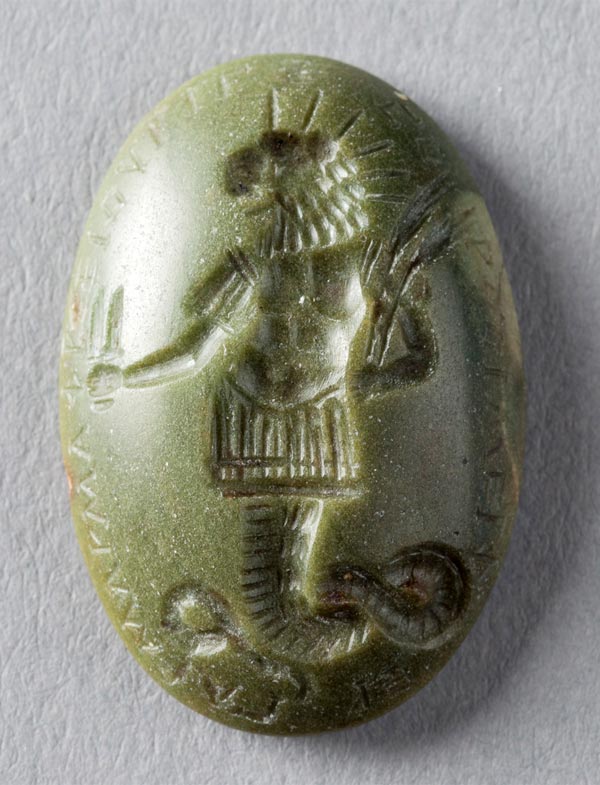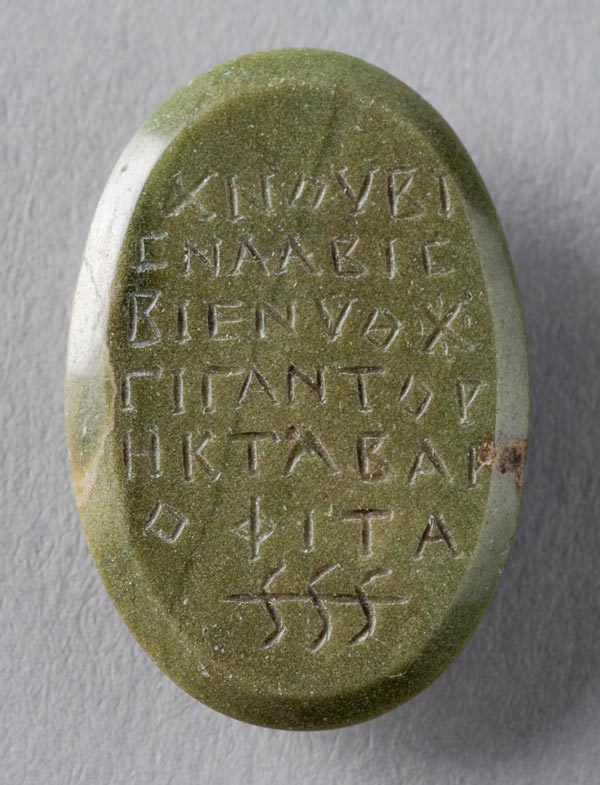One of the many protective roles assigned to the lion-headed deity Chnoubis was to heal the pains and diseases of the stomach. Facing left, Chnoubis is depicted with the torso and arms of a man, wearing a cuirass under which a tunic forms a kilt. But the lower part of the body is a serpent. Wearing the customary six rays round his head, he holds two daggers in his right hand as well as two stalks of grain in his left one. Around the edge of this side of the amulet, starting at the top, is a long magical formula, σοροορμερφεργαρμαρμαφρειουριγξ, a string of syllables whose meaning probably relied on the sound of the letters themselves. Actually, this formula often appears on uterine amulets. Then, on the reverse we can read the six-line inscription: Χνουβι | σνααβις | βιενυθ | γιγαντορ ηκταβαρ | οφιτα, which is transcribed as Χνουβίς νααβις βιενυθ γιγαντορῆκτα βαροφίτα: “Chnoubis Naabis Bienyth, shatterer of Giants, crusher of snakes.” And at the very bottom of the gemstone is the symbol of Chnoubis: three reversed curves crossed by a horizontal line.
Stomach Amulet


Stomach amulet: lion-headed serpent Chnoubis In Greek Steatite, green to black 25 x 16.9 x 5.2 mm 1st–5th c. AD Egypt Alexander G. Ruthven. KM 1963.04.0008

